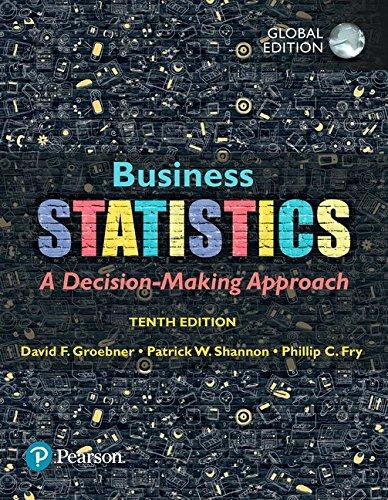A regional U.S. commercial bank issues both Visa and MasterCard credit cards. As a part of its
Question:
A regional U.S. commercial bank issues both Visa and MasterCard credit cards. As a part of its annual review of the profitability of each type of credit card, the bank randomly samples 36 customers to measure the average quarterly charges per card. It has completed its analysis of the Visa card accounts and is now focused on its MasterCard customers. A random sample of 36 MasterCard accounts shows the following spending per account (rounded to the nearest dollar):
$2,869 $3,770 $2,854 $2,750 $2,574 $2,972
$2,549 $3,267 $3,013 $2,707 $2,794 $1,189
$2,230 $2,178 $3,032 $3,485 $2,679 $2,010
$1,994 $2,768 $3,853 $2,064 $3,244 $2,738
$2,807 $2,395 $3,405 $3,006 $3,368 $2,691
$1,996 $3,008 $2,730 $2,518 $2,710 $3,719
a. Based on these randomly sampled accounts, what is the best point estimate of the true mean quarterly spending for MasterCard account holders?
b. If the bank is interested in developing a 95%
confidence interval estimate of mean quarterly spending, what distribution will be used to determine the critical value?
c. Determine the standard error of the sampling distribution.
d. Construct the 95% confidence interval estimate for the population mean of annual MasterCard spending for the bank’s customers.
e. If the bank desires to have a higher level of confidence in its interval estimate, what will happen to the margin of error?
Step by Step Answer:

Business Statistics
ISBN: 9781292220383
10th Global Edition
Authors: David Groebner, Patrick Shannon, Phillip Fry






